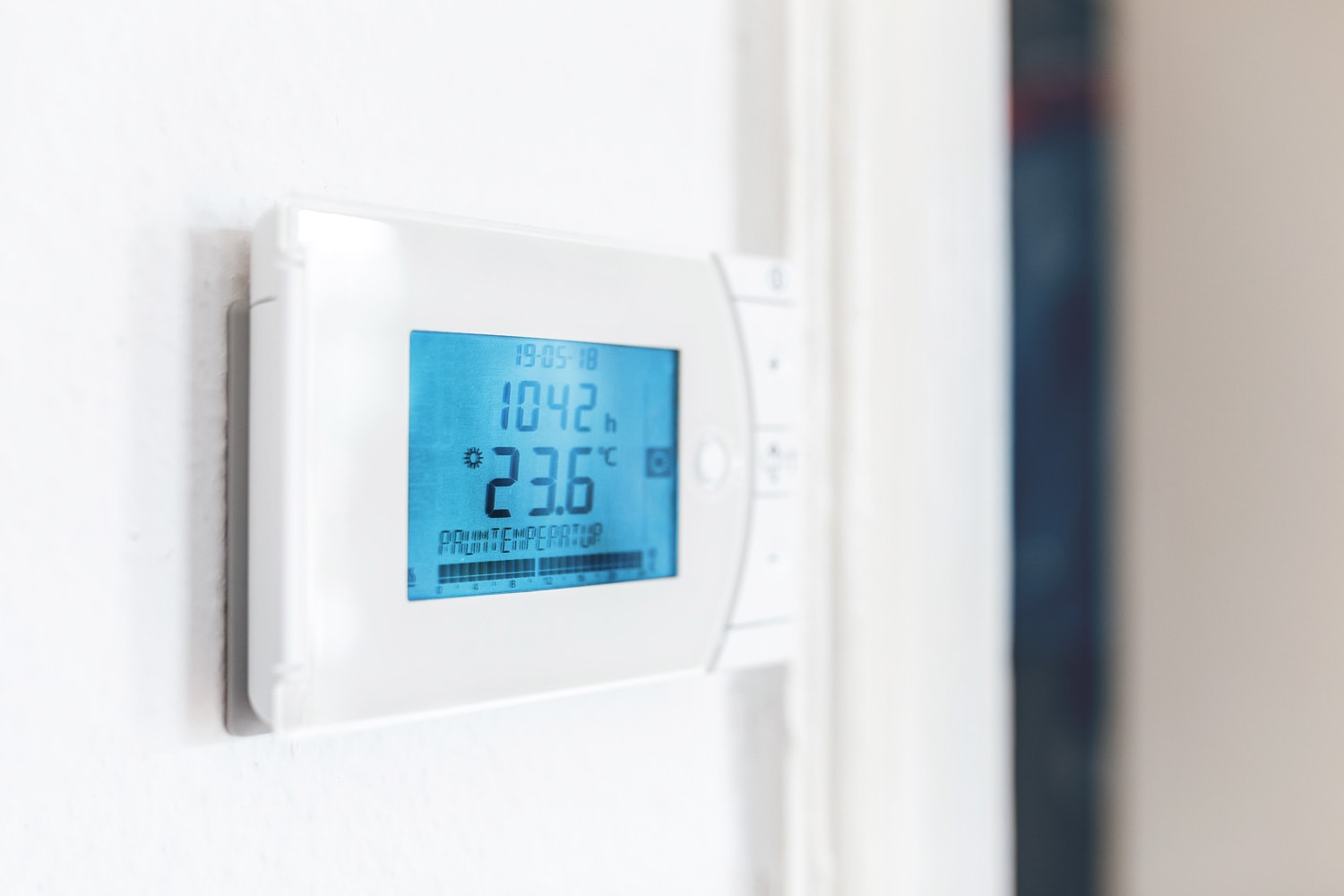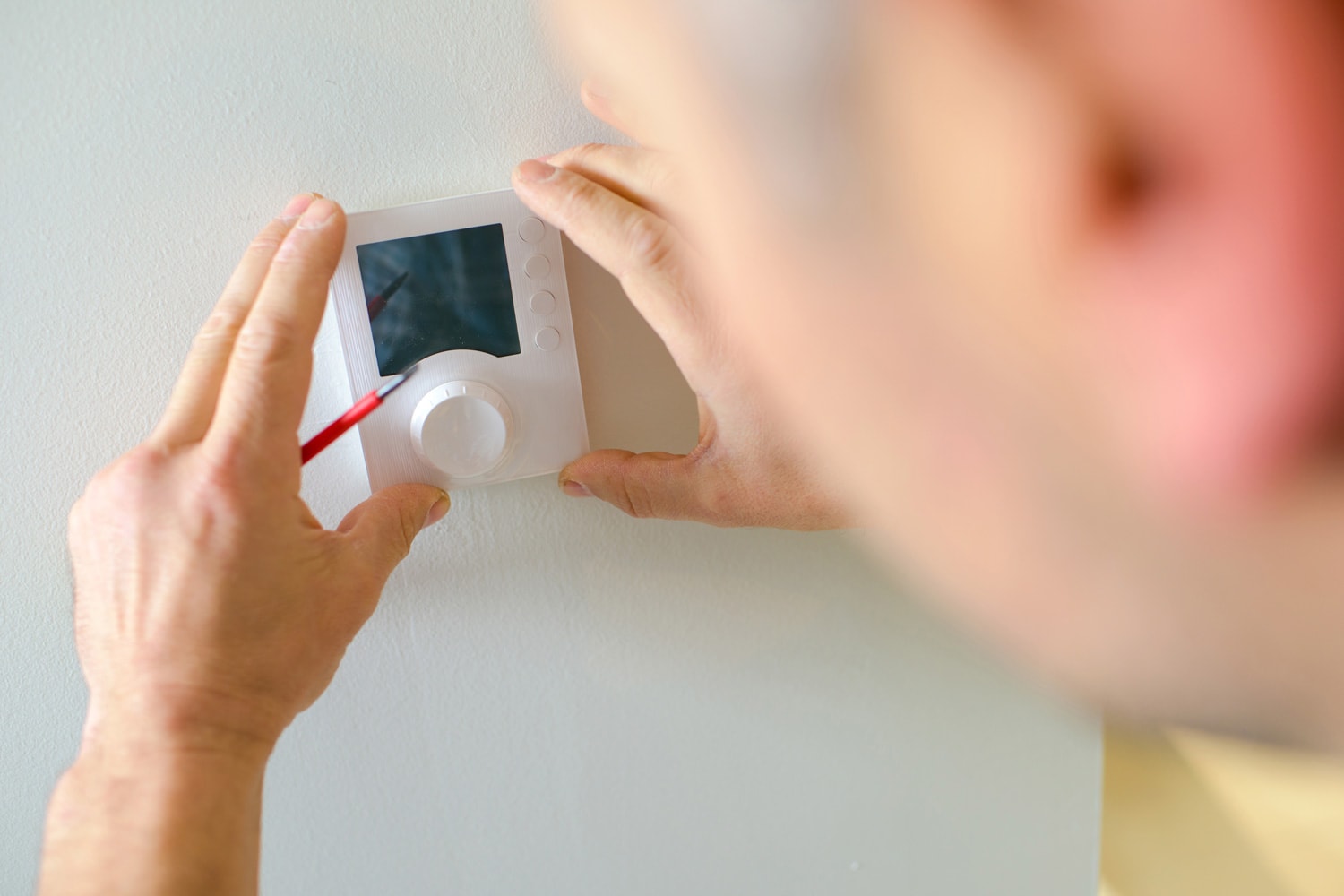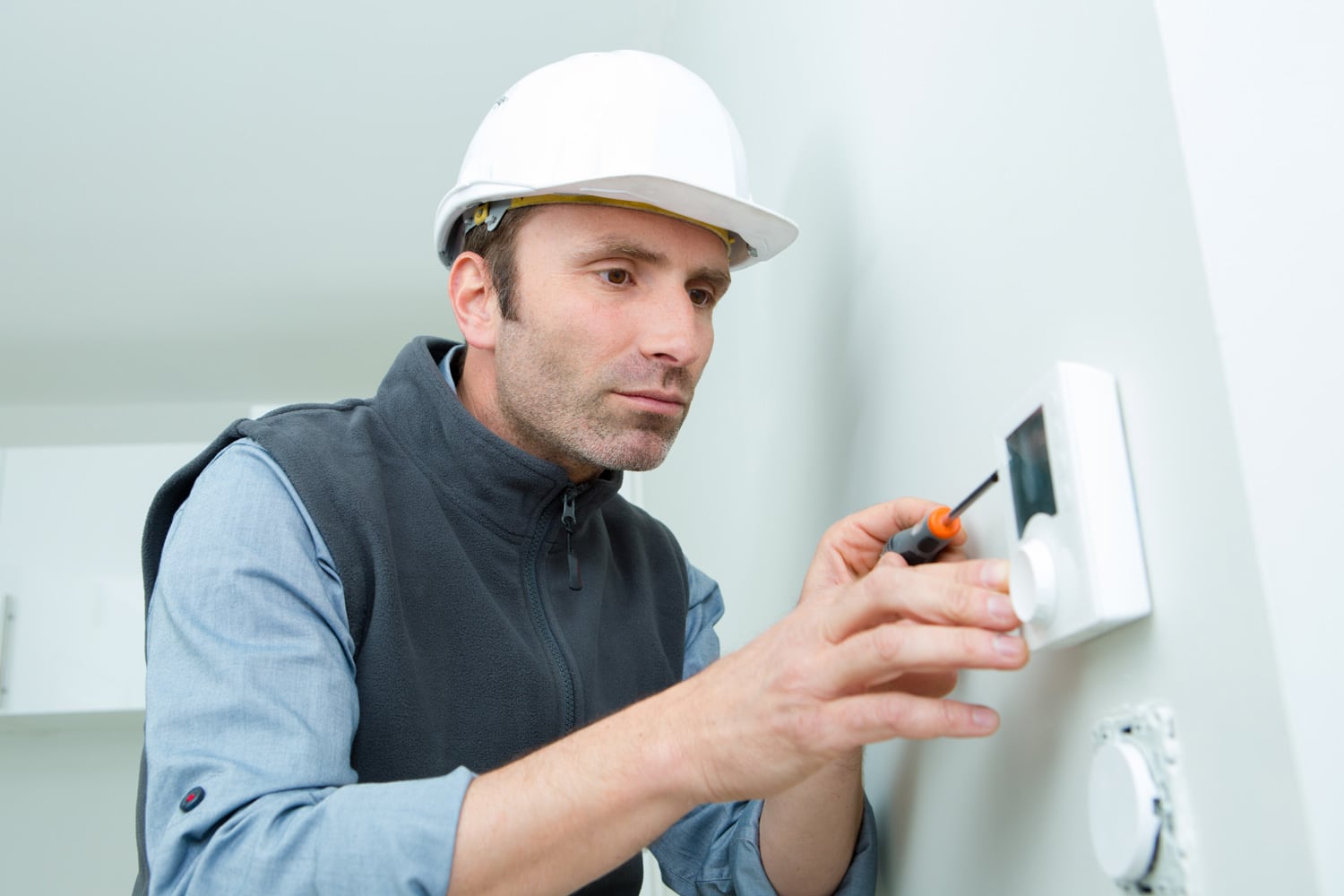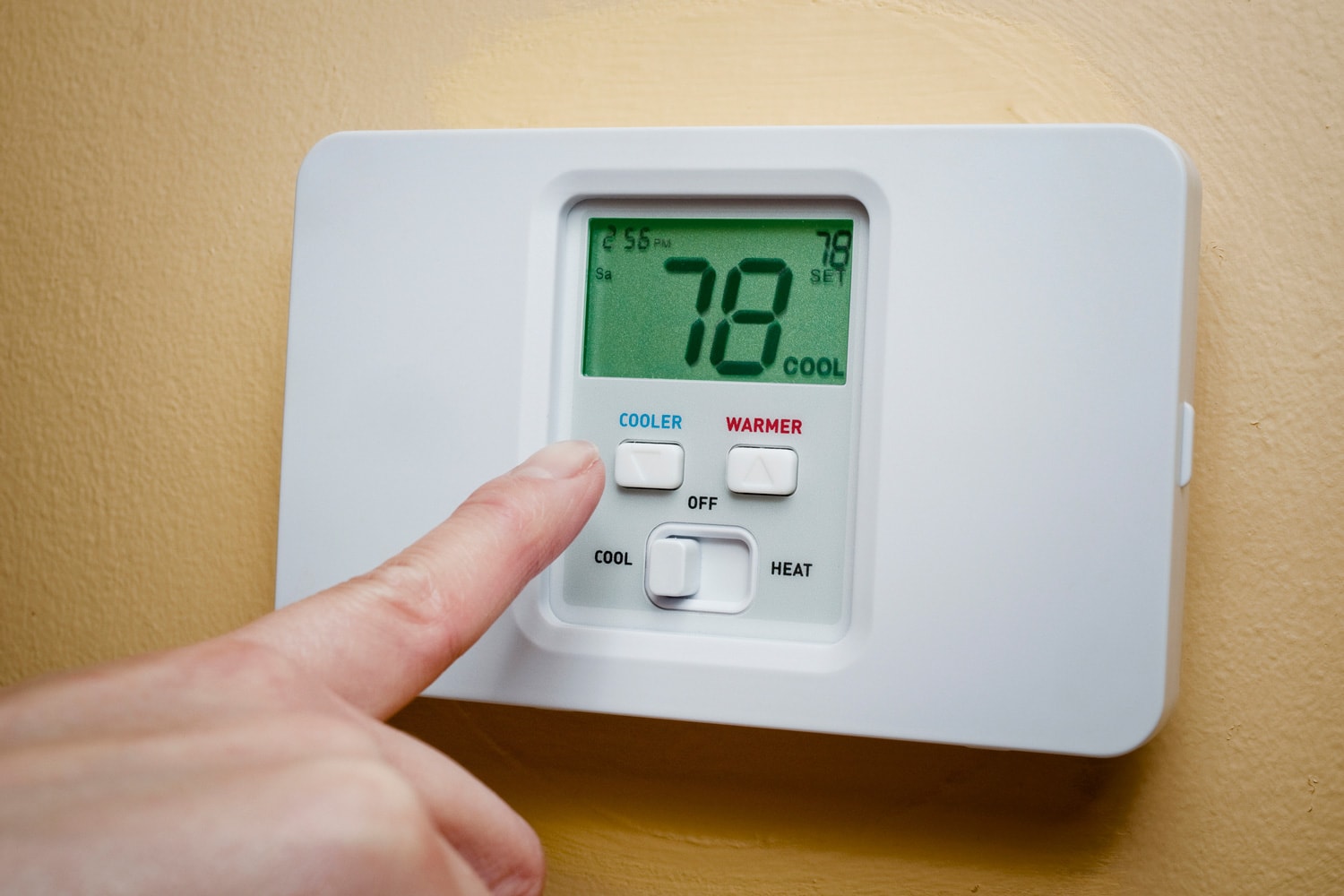A thermostat with your HVAC system turns off the unit after reaching your desired temperature to maintain optimal conditions. So, what happens when it fails to shut off when it's at your set climate? In this post, we explain the why and how of dealing with a faulty thermostat!
One reason your unit keeps running is because of an issue with the thermostat's wiring, switches, or sensors. A faulty thermostat can't receive accurate temperature readings nor determine when your unit reaches the right conditions. Wrong settings on the thermostat and unit are another reason.
It's best to ensure your thermostat works in top condition to maximize efficiency with your HVAC system. Keep reading to learn solutions for other problems with thermostats.

Why Is My Unit Still Running After Reaching Temperature?

If you have a damaged thermostat installed in your HVAC system, it could be the reason your unit stays open even after it reaches an optimal temperature. These issues usually include wiring and connection problems or incorrect settings.
Professionals recommend adding a thermostat to your heating and cooling systems to maximize efficiency and maintain comfortable conditions without worrying about wasting energy. When possible, it's best to purchase a model that's compatible with your unit and its needs for better device-to-device communication.
The primary role of a thermostat in your HVAC system is to maintain temperature by turning your unit on or off accordingly. These cycles are often unnoticeable, so if realize there are fluctuating temperatures, it must mean there's an issue with your thermostat or unit.
Tips When Dealing With Faulty Thermostat
When you notice these changes, evaluate your heating and cooling systems, and any extra devices installed. If you've identified your thermostat is causing the problem, here's a quick list of what you should do.
1. Check Connections
One of the leading reasons your thermostat can't shut your HVAC unit off is that it cannot read the right temperature. So, it could have something to do with your device's wiring or sensors.
Thermostat connections can break down due to age, dirt, or pests. If the sensor isn't working correctly, you can switch the HVAC to manual until you fix the thermostat.
If the wires are loose, you need to cut and replace them. It's best to contact a professional to help you with this repair if you're unfamiliar with the wirings.
2. Switch Batteries
If you own a battery-powered thermostat, you might need a fresh pair of batteries to get it fully functional again. A weaker battery can cause erratic behavior with your device, from inaccurate readings to none.
Switching out batteries is also a solution when the thermostat only shows a blank screen or doesn't respond to commands. Electric thermostats may not come with batteries, meaning there's a problem with their internal structures.
Click here to see the Energizer AA and AAA Batteries Combo Pack on Amazon.
3. Adjust Settings
If your thermostat doesn't seem to have any physical damage, it could have something to do with your settings. Your AC or furnace settings might have been on "fan" instead of the "cool" or "heat" option.
Recheck your thermostat and HVAC unit's settings to see if you set them correctly. It could also be several people are adjusting the device, causing the unit to run back and forth to achieve each setpoint change.
Easy Fixes For Common Problems With Thermostats

After evaluating your thermostat, the cause may be a different underlying issue. Besides your thermostat keeping your HVAC running, here are other common thermostat problems and quick solutions.
Thermostat Is Not Reaching Correct Temperature
There are several reasons your thermostat cannot reach your desired setting. If the problem is with your heating or cooling device, it may cause the thermostat to catch the wrong readings.
If it's because of your thermostat, it's likely because of a connection fault, such as loose wires or blocked, dirty sensors.
What To Do?
Wiring issues tend to occur with a DIY-installed thermostat. For this case, you can repair it by redoing the wiring using a manual to guide you with attaching the wires to their respective terminals or having a technician assist you.
A buildup of dirt could also be responsible for inaccuracies. You can clean dirty sensors thoroughly using a soft brush or cloth to wipe off the grime from the interior and exterior of your thermostat.
It could also be a technical glitch, so try recalibrating your device with the help of another thermostat. You can use readings from a regular thermostat as your guide while you adjust the unit's settings.
Wrong Thermostat Placement

It's crucial to put your thermostat in the best and correct spot because it controls your HVAC during operation. If you place it in the wrong location, it could disrupt the readings, causing your unit to run continuously or suddenly shut off.
What To Do?
Experts recommend keeping your thermostat no more than 5 feet from the room door, and away from windows, direct sunlight, and heat sources. If you need to adjust the primary wirings, it's best to have a professional do that.
Read this post to learn how to protect your thermostat from the sun: How To Block Sun From Thermostat?
Thermostat Won't Turn On
Another common problem is when thermostats appear with a blank display or don't turn on, which implies both simple and complex issues with the device.
Before trying solutions, you'll need to confirm if it no longer opens because of something within the unit or its wiring.
What To Do?
If the batteries die, switch them out with fresh ones or leave the thermostat to charge. For an electric thermostat, look through the wiring to see if it's loose or damaged, causing a lack of power.
A tripped circuit breaker, fuse, or safety switch could also be responsible for the sudden power loss. Inspect your electrical box to see if there are any physical damages.
You can flip the circuit breaker back, replace the fuse, or empty the AC pan to see if the thermostat turns on. If it fails or trips again, it calls for the help of an HVAC professional.
Improper Installation And Wiring

Most homeowners prefer DIY projects to save on costs when making additions to their homes, but the lack of experience can lead to installation issues later.
If you added the thermostat yourself, you might have overlooked tightening some of the wirings, or there are wires you installed incorrectly.
What To Do?
Once you confirm an installation problem, don't take off the thermostat yourself to prevent further damage or electrical complications. Instead, contact a licensed professional to repair or replace the thermostat.
How Much To Repair A Faulty Thermostat?
You can expect to pay $55 to $600 to repair your thermostat. The cost ranges depending on the type of unit and the severity of the repair it requires.
Some companies charge separately for materials or additional fixes, so be ready to pay for any extra costs.
Homeowners can replace batteries or troubleshoot Wi-Fi models themselves at little to no cost. However, professionals should handle complex issues to ensure the HVAC system stays functional.
Can I Fix A Thermostat Myself?
Yes, you can fix your thermostat if the issue requires little or basic electrical knowledge. Repairing your thermostat on your own can save you on costs, especially with minor damages.
If your thermostat demands a complicated fix, you're better off leaving it to the professionals to avoid creating further damage to your HVAC system. Handling electrical repairs without expertise can also put you and the rest of your home at risk.
Should I Replace My Thermostat?

Generally, a thermostat can last up to 10 years or longer, depending on the type of thermostat. But once your device goes beyond this length of time and starts showing frequent issues, consider replacing it.
Here are a few signs it's time to replace your thermostat.
HVAC Keeps Turning On And Off
As we mentioned, your thermostat turns your HVAC units on and off to optimize temperature levels. But if it happens more frequently than usual, it could mean your thermostat is faulty or has trouble communicating with your system.
Inaccurate Readings
Faulty readings are an obvious sign your thermostat needs fixing, as it could cause your HVAC to heat and cool your home incorrectly. Although it is repairable, you could take this as a sign to replace it if you own an older model.
Read this post for more solutions when there are wrong readings: Thermostat Set At 72 But Reads 75 – What’s Wrong?
Unresponsiveness
You can fix an unresponsive thermostat by changing the batteries, charging, repairing connections, or resetting it. But if it persists after all these steps, you might have to get a new one.
Frequent Temperature Changing
If you notice your HVAC setting temperatures on its own, your thermostat may be responsible. In this case, your thermostat is likely having trouble reading and maintaining temperature or sending signals to your system.
Short Cycling
Short cycling happens when your HVAC doesn't complete its cooling or heating cycle, causing it to exert more effort to work effectively. It could damage your HVAC system in the long run, so it's best to repair and replace anything that could cause this problem.
In Summary
Faulty thermostats affect the performance of your HVAC system, mainly because it's responsible for controlling and maintaining the temperature levels in your home. If it doesn't shut off your unit after reaching the desired temperature, it could be because of connection problems, dirt buildup, or physical damage.
You can repair it through quick solutions, including thorough cleaning and adjusting its connections. But if your unit is older, consider a replacement.

